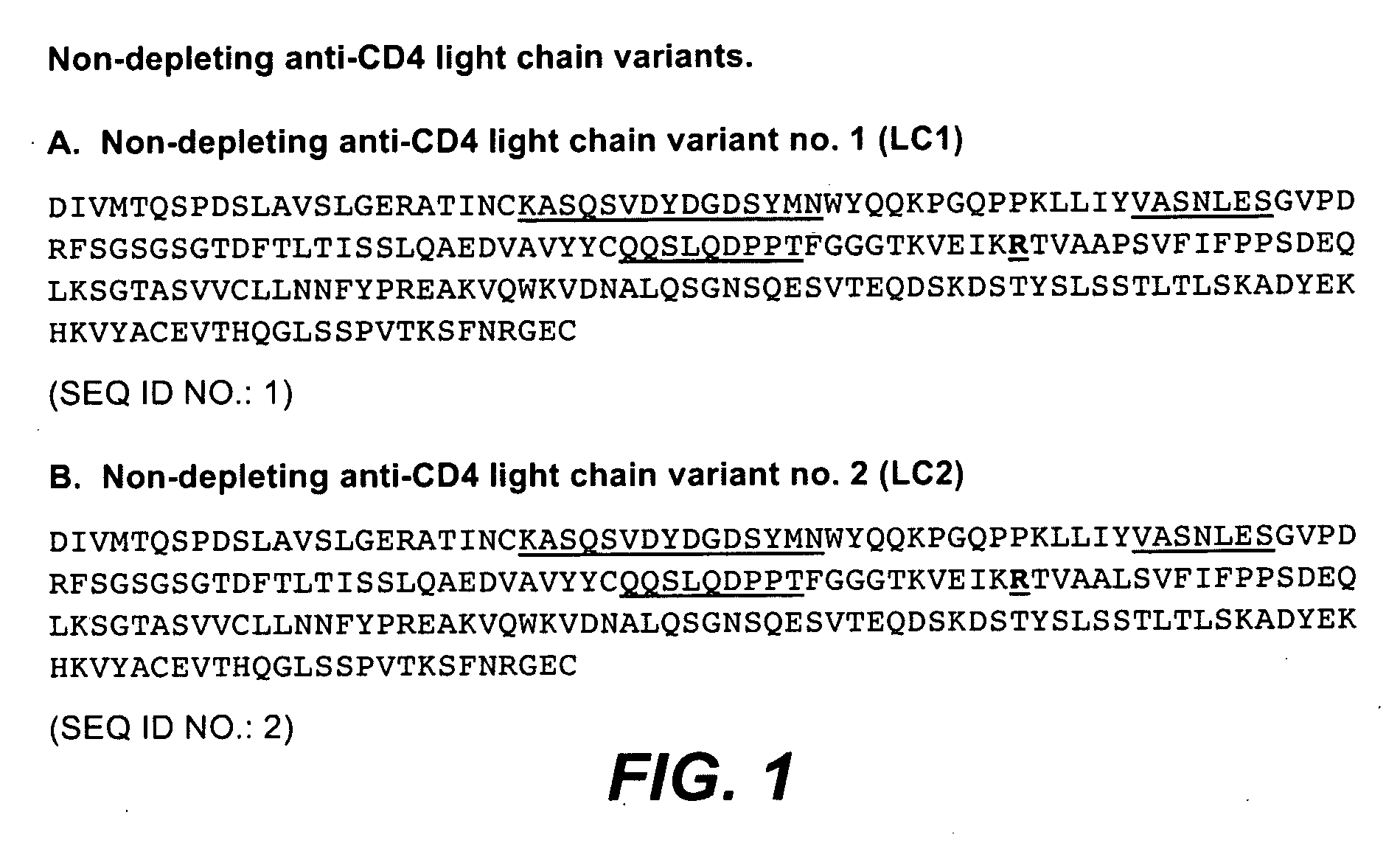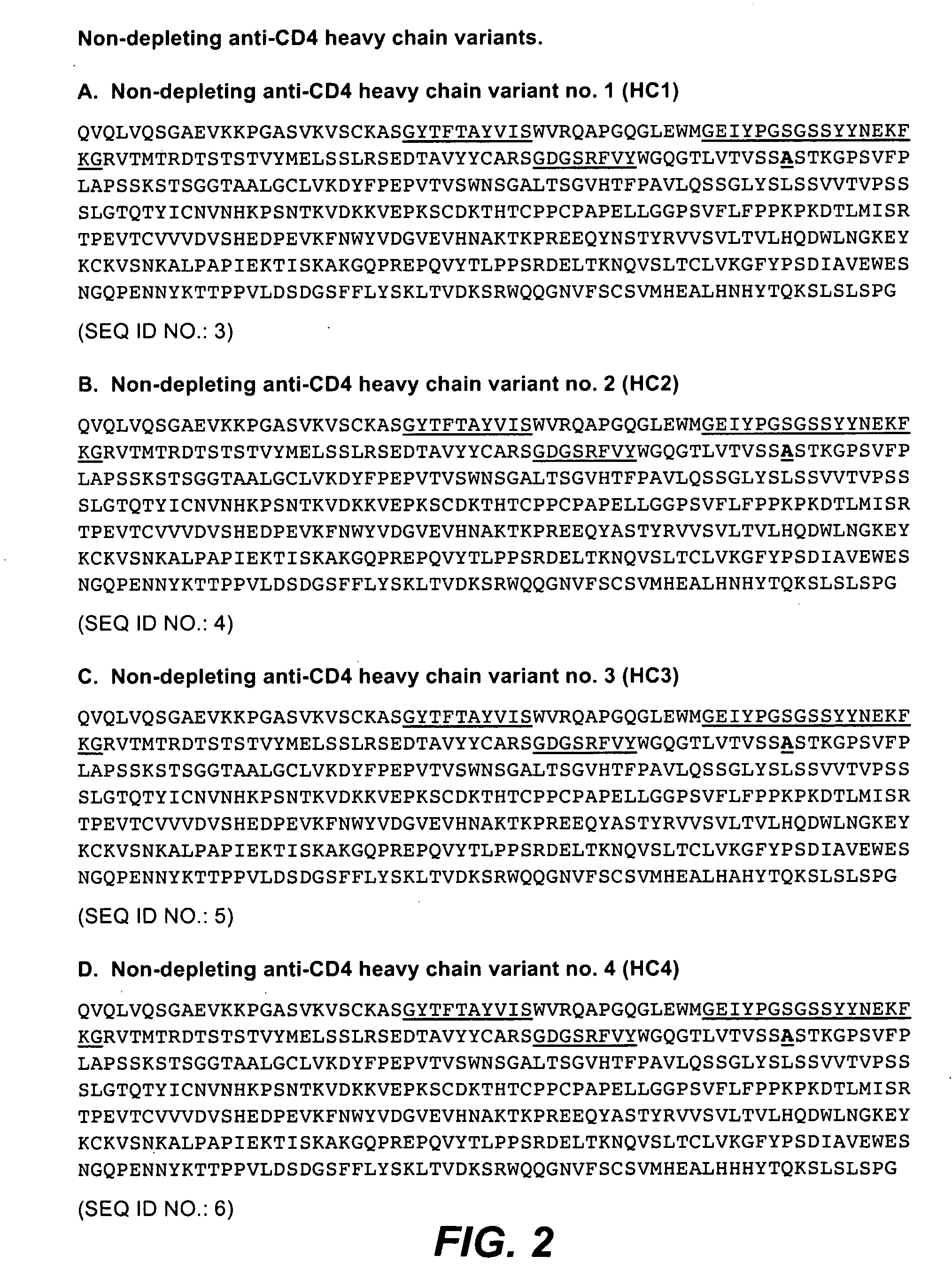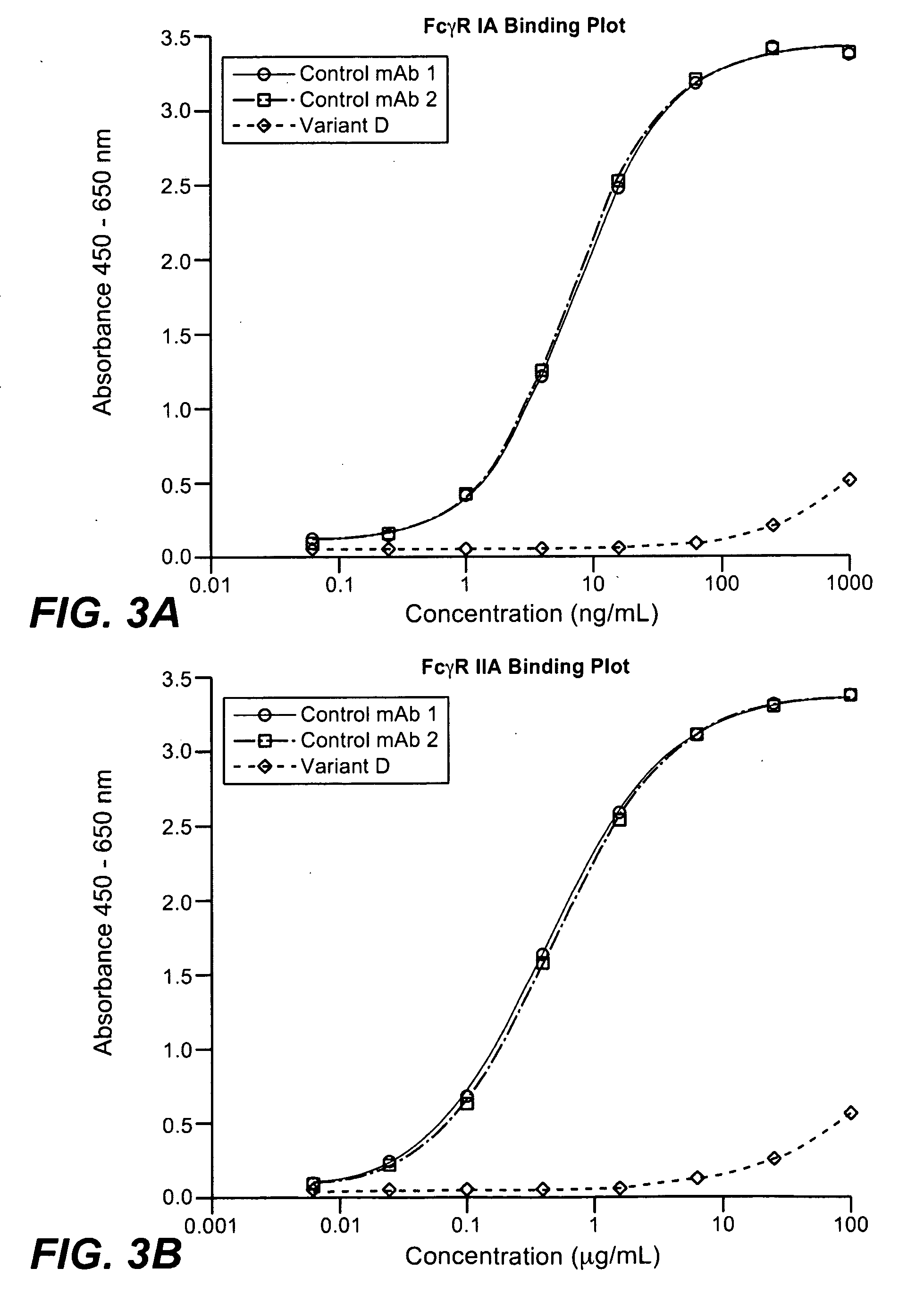Methods of Treating Autoimmune Diseases Using CD4 Antibodies
a technology of autoimmune diseases and antibodies, applied in the field of autoimmune diseases using cd4 antibodies, can solve the problems of not curative treatment for patients diagnosed, drug side effects that affect the patient being treated, and interfere with the person's ability to produce all antibodies, so as to minimize toxicities and adverse events, the effect of easy administration
- Summary
- Abstract
- Description
- Claims
- Application Information
AI Technical Summary
Benefits of technology
Problems solved by technology
Method used
Image
Examples
example 1
Non-Depleting Anti-CD4 Variants with Minimized Effector Functions and Decreased Clearance In Vivo
[0317]The concern with targeting T cells with anti-CD4 antibodies has been reduction or depletion that could lead to immune suppression. In addition, clinical results with prior anti-CD4 antibodies, as discussed above in the background section, indicate that more desirable dosing regimens of anti-CD4 antibodies are needed. Accordingly, anti-CD4 antibody variants (see Table 2 below) were engineered to be non-depleting via certain amino acid substitutions in the parent molecule. Specifically, asparagine at amino acid position 297 in the heavy chain was changed to alanine (N297A). This substitution has been shown to abrogate the N-linked glycosylation at the Fc region which has been shown to be important for binding of antibody to Fcγ receptors (Burton and Dwek, Science 313:627-28, 2006). In addition, it has been shown that aglycosylated antibodies fail to induce ADCC both in vitro and in v...
example 2
In Vivo Administration of Non-depleting Anti-CD4 Variant D by Intravenous or Subcutaneous Routes
[0369]Variant D was administered to baboons by repeated intravenous (IV) or subcutaneous (SC) injection eight times at weekly intervals (8-week dosing period) and serum Variant D concentrations were determined. Sixty naive male and female baboons (Papio anubis) were divided into five dose groups (6 / sex / group) and administered either control article (Variant D Vehicle) or test article (Variant D) once weekly for 8 weeks as indicated in Table 6 below. A total of 30 animals (3 males and 3 females from each of groups 1-5) underwent a 10-week recovery phase following the last dose.
TABLE 6Study Design for In Vivo Administration of Variant DDoseDoseNumberDose LevelConcentrationVolumeDose(Male / Group(mg / kg)(mg / mL)(mL / kg)RouteFemale)10 (vehicle)00.5IV & SC6 / 62 5100.5IV6 / 6315300.5IV6 / 64501000.5IV6 / 65501000.5SC6 / 6
Intravenous Administration (Groups 1-4):
[0370]Intravenous injection in Group 1 was perfo...
example 3
A Phase I Study of a Non-depleting Anti-CD4 Antibody (Variant D) Administered by Intravenous or Subcutaneous Routes in Patients with Rheumatoid Arthritis
Study Design
[0384]This is a Phase I multicenter study that will be conducted in the United States and consists of a double-blind (investigator and patient), placebo-controlled, single ascending-dose (SAD) stage, followed by a double-blind (investigator and patient), placebo-controlled multiple ascending-dose (MAD) stage using different patients from those in the SAD stage. The MAD stage population reflects the patient population most likely to receive Variant D in future studies. The study will be conducted in approximately 65 adult patients between 18 and 80 years old who have RA. Patients enrolled in the SAD stage will have a diagnosis of RA without pre-specified disease activity. Patients enrolled in the MAD stage will have mild to moderate disease activity, defined as a tender and swollen joint count of ≧3 and inadequate respons...
PUM
| Property | Measurement | Unit |
|---|---|---|
| time | aaaaa | aaaaa |
| time | aaaaa | aaaaa |
| time | aaaaa | aaaaa |
Abstract
Description
Claims
Application Information
 Login to View More
Login to View More - R&D
- Intellectual Property
- Life Sciences
- Materials
- Tech Scout
- Unparalleled Data Quality
- Higher Quality Content
- 60% Fewer Hallucinations
Browse by: Latest US Patents, China's latest patents, Technical Efficacy Thesaurus, Application Domain, Technology Topic, Popular Technical Reports.
© 2025 PatSnap. All rights reserved.Legal|Privacy policy|Modern Slavery Act Transparency Statement|Sitemap|About US| Contact US: help@patsnap.com



